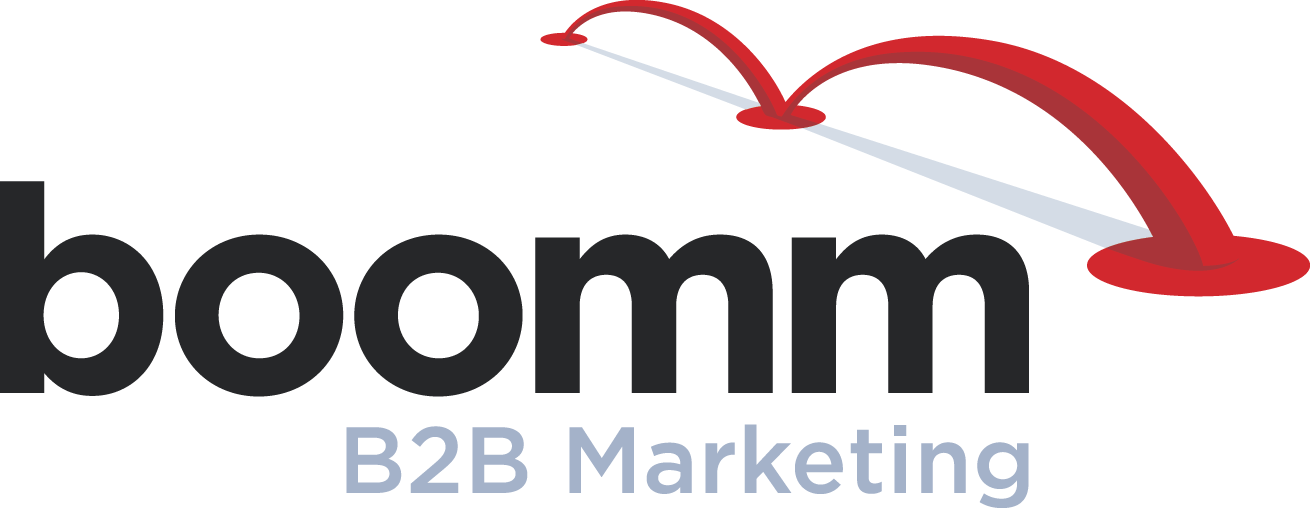The Key Characteristics of a Best-in-Class B2B Blog
Boomm knows that business blogging can be challenging and time-consuming, and we’d like to help. So we’ve launched a new ebook, “Introduction to Business Blogging,” all about generating, optimizing and promoting blog content. This blog post, and the others in the series, are just a sample of what you’ll find in the ebook. Download it here!
Blogging is crucial to B2B marketing. It establishes thought leadership, generates leads, and can help get your website to the top of Google. Simply put, business blogging makes your marketing goals more achievable. But what are the essential elements that a B2B blog needs?
Obviously, every blog is different and has to find its unique voice and style. But there are some things that every business blog should have. Here are a few of the most important aspects of a business blog:
- First and foremost, a B2B blog must add value to your audience. With so many blogs out there, your potential audience has to have a reason to read your company’s blog, and not someone else’s. It can be a little thing—providing interesting information for those in your industry, for instance—but without a clear addition of value to your audience, you’ll lose their interest. What is a unique viewpoint or angle that your company can provide on industry topics?
- Optimize your blog for SEO. Pick a keyword that is related to your blog topic and relevant for your industry. (One way to determine the relevance of a keyword? Use Google AdWords to see how many people are searching for it.) Fit that keyword in your blog post—in the title, the body text, the URL, and the page description. Optimizing each blog post for SEO will help you draw in an audience who might not find your website otherwise.

- Blog post content should be a mix between current and evergreen. Make room in your content plan to talk about current hot-button issues and news in your industry, since customers and prospects will be looking for information and discussion on those things. But some questions and issues are always relevant to an industry. For instance, there may be a common problem that your industry deals with on a regular basis—that kind of topic can be written about at almost any time, and can be included in a plan for future blog posts. Don’t neglect either kind of content.
- The blog should be primarily informative, not full of sales pitches. Blog posts are a chance to establish thought leadership in your industry, and they are great tools for lead generation. But if your language is overly self-promotional or if you spend every blog post talking about your company, it becomes a turn-off for your audience. That being said…
- You can, and should, include calls-to-action in your blog posts, such as links to other resources on your website or an option to subscribe to your email newsletter. If your audience finds the content you provide valuable and informative, they’ll likely want to respond in some way, and CTAs provide the option for them to respond in ways that will generate leads for you.
- The blog’s tone should be clear and approachable. A B2B blog can sound professional and use common industry language, but it shouldn’t sound like an instruction manual or be buried in jargon. Make sure your sentences are clear and direct, your posts are well-constructed, and don’t be afraid to write in a more conversational style.
- Break up the text with helpful headings and images. While your blog posts should be long enough to address the topics you’re covering fully, no one wants to read a giant block of text. Headings and images help the reader’s eye move down the page and stay engaged with the topic. (When you include images, be sure to put your focus keyword in the image tags—this also boosts your SEO.)
- Post regularly. Once a week is a good minimum. Pick a day of the week when your new blog post will go up—consistency will help you establish an audience. Blog posts don’t have to be lengthy every week. A short but helpful post is worth more than a longer but less clear one.
With these essentials as your backbone, you can establish a credible and compelling B2B blog voice.
Want more tips on creating and maintaining a successful business blog? Don’t forget to check out our other posts in the series, coming soon!



